Heraklion or Iraklion, whose emblem is the Venetian fortress of Koules, is the largest city in Crete. The city is diverse in culture, with Byzantine churches standing next to the Venetian mansions and Turkish fountains. Heraklion is the birthplace of famous artist El Greco and well-known writer Nikos Kazantzakis. The vibrant city of today with squares and pedestrian walkways is still concentrating much of its charm around the Old Town and its romantic Venetian Harbour. 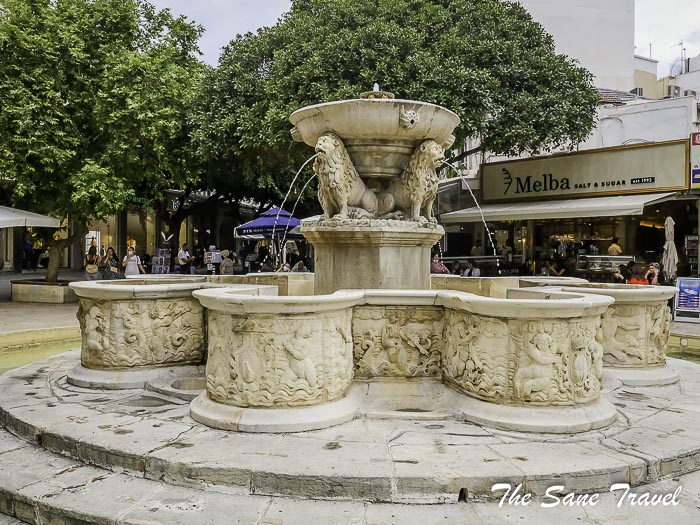
I offer you to take a self-guided walking tour to get a feel of this vibrant city. Let’s start from Freedom Square, one of the busiest places in the city.
Plateia Eleftherias, or Freedom Square
The spacious Plateia Eleftherias is worth exploring.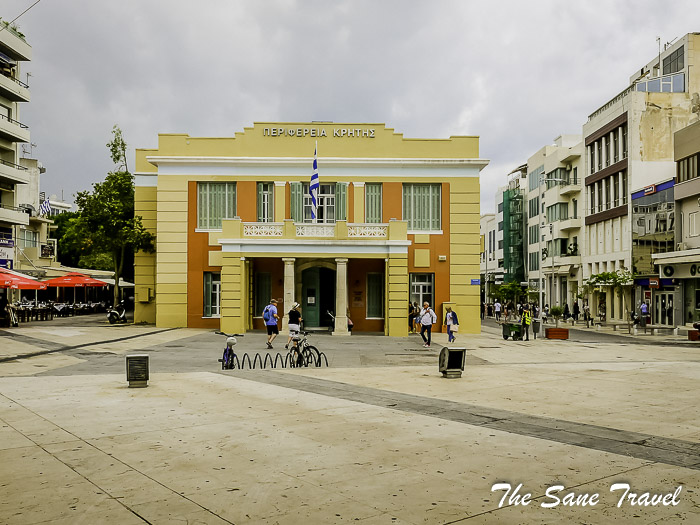 Next to the square, you can find the shaded park of Georgiades, a fine place where to rest your feet and watch the busiest intersection in Heraklion. The entrance to the St. George's Gate, used in Venetian times as a passage between the city and its port, is on the seaward side of the square. You can enter the gate by walking down stone steps. Now have a look at the statue of Eleftherios Venizelos directly above the St. George’s Gate. Eleftherios Venizelos was Crete's greatest statesman who played a prominent role in the history of Crete and Greece. As the leader of the Liberal Party, he was elected as Prime Minister of Greece eight times, serving between 1910 and 1933.
Next to the square, you can find the shaded park of Georgiades, a fine place where to rest your feet and watch the busiest intersection in Heraklion. The entrance to the St. George's Gate, used in Venetian times as a passage between the city and its port, is on the seaward side of the square. You can enter the gate by walking down stone steps. Now have a look at the statue of Eleftherios Venizelos directly above the St. George’s Gate. Eleftherios Venizelos was Crete's greatest statesman who played a prominent role in the history of Crete and Greece. As the leader of the Liberal Party, he was elected as Prime Minister of Greece eight times, serving between 1910 and 1933.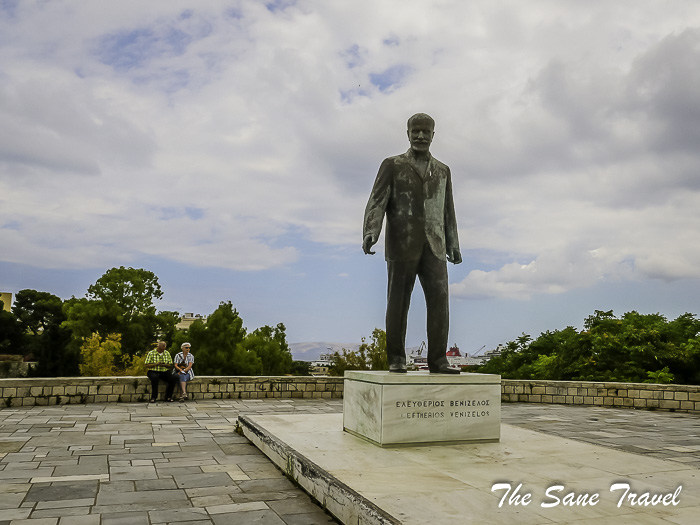 Looking downwards from the monument, you can admire the impressive Venetian Walls of the city.
Looking downwards from the monument, you can admire the impressive Venetian Walls of the city.
The Venetian Walls
The Venetian Walls are one of the best-designed examples of fortification in the entire Mediterranean. The famous Venetian architect, Michele Sanmicheli designed the walls and bastions more than 400 years ago.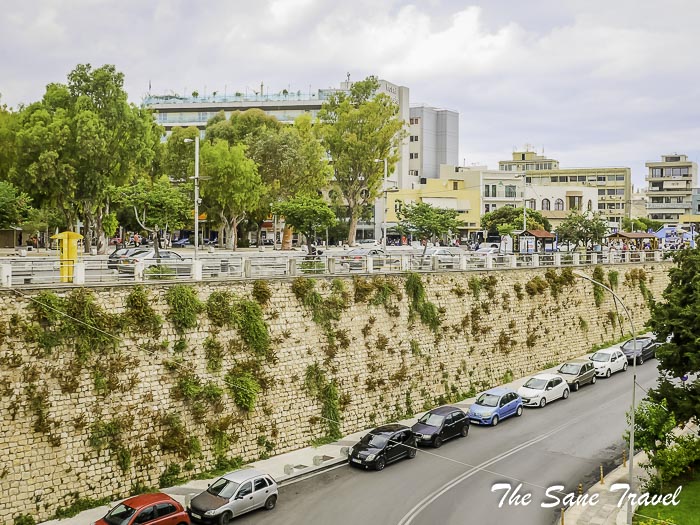 From the seven bastions, only the Martinengo bastion has survived to this day. The bastion visitors will find the tomb of the renowned writer N. Kazantzakis overlooking the city. Only two gates out of four to the city have survived, including the St. George’s Gate mentioned before. Now get ready to visit the Archaeological Museum. My first idea was that I would find just unimpressive crumbs of ancient artefacts, but I was completely wrong. The museum has a gorgeous collection.
From the seven bastions, only the Martinengo bastion has survived to this day. The bastion visitors will find the tomb of the renowned writer N. Kazantzakis overlooking the city. Only two gates out of four to the city have survived, including the St. George’s Gate mentioned before. Now get ready to visit the Archaeological Museum. My first idea was that I would find just unimpressive crumbs of ancient artefacts, but I was completely wrong. The museum has a gorgeous collection.
Archaeological Museum
The Archaeological Museum is considered one of the most important museums in Europe. 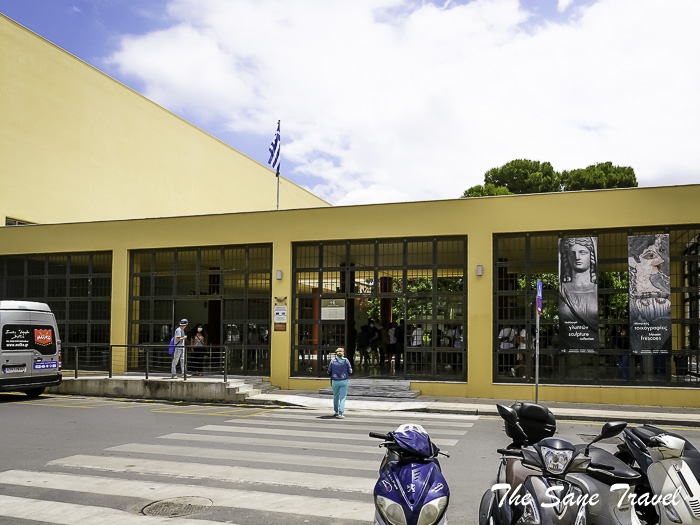 The enormous Archaeological Museum building converted from an old power station on one corner of Freedom Square has artefacts from Knossos, Archanes, Phaestos, Zakros and many other archaeological sites of Crete. The museum's pride is the treasures of the earliest European civilisation, the Minoan, which can be admired here in all its historical continuity. The exhibits include representative samples from all periods of Cretan history, covering 5,500 years. The most famous frescoes of Knossos Palace are housed in the museum. The other popular highlights include classic Hellenic and Roman sculptures, frescoes, jewellery, wall paintings, and pottery.
The enormous Archaeological Museum building converted from an old power station on one corner of Freedom Square has artefacts from Knossos, Archanes, Phaestos, Zakros and many other archaeological sites of Crete. The museum's pride is the treasures of the earliest European civilisation, the Minoan, which can be admired here in all its historical continuity. The exhibits include representative samples from all periods of Cretan history, covering 5,500 years. The most famous frescoes of Knossos Palace are housed in the museum. The other popular highlights include classic Hellenic and Roman sculptures, frescoes, jewellery, wall paintings, and pottery.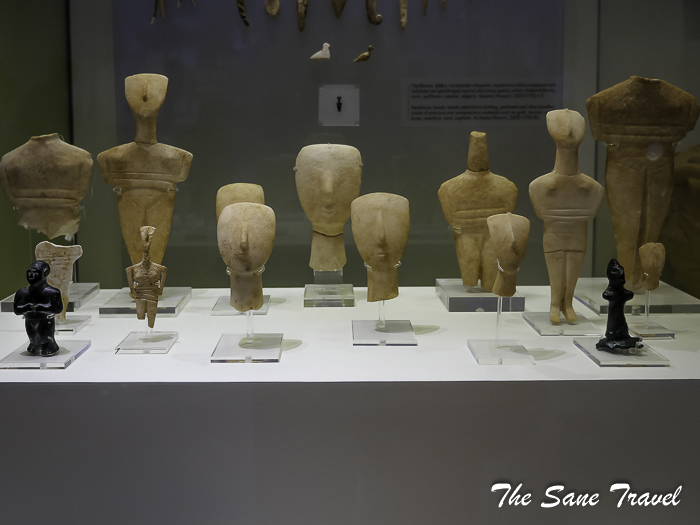
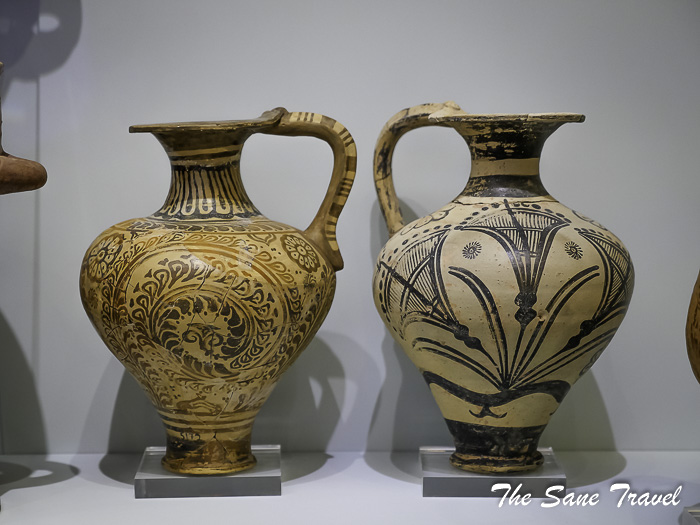
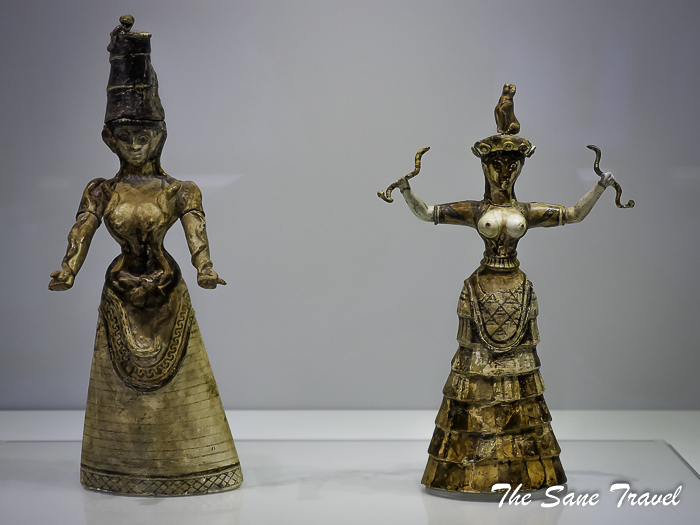
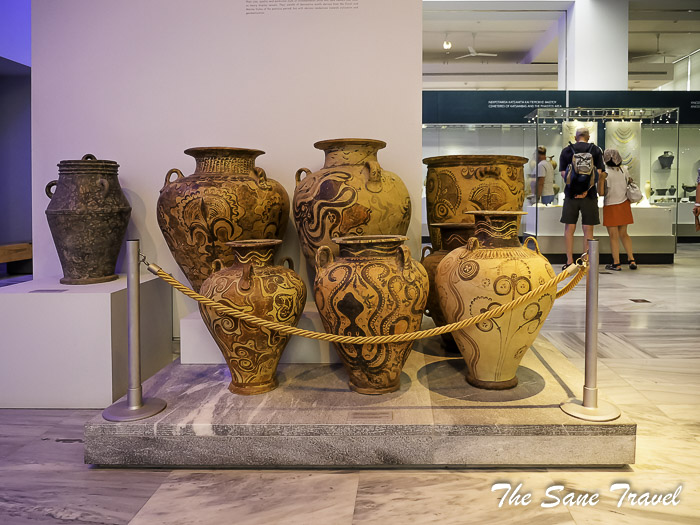
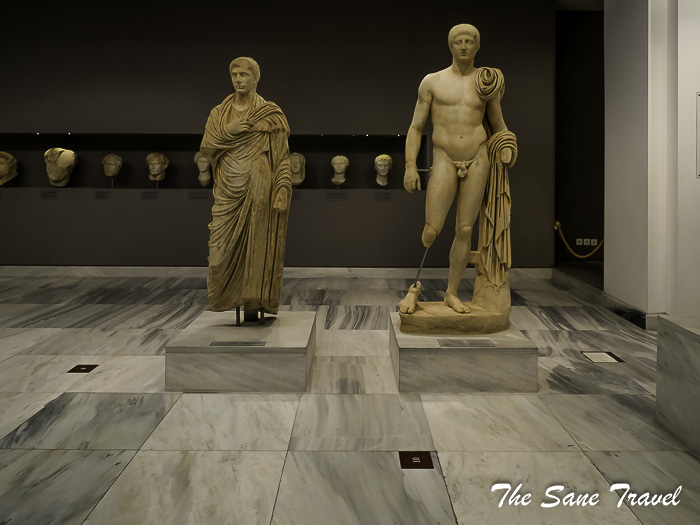 It's a good idea to start your visit early in the morning or late in the day during the summer months to avoid lines as the museum is a popular destination.
It's a good idea to start your visit early in the morning or late in the day during the summer months to avoid lines as the museum is a popular destination. 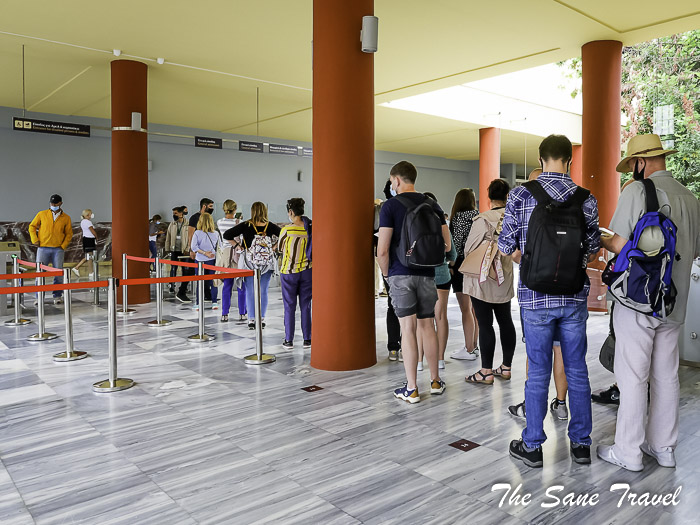 After visiting the museum, you can take a break at some café nearby or continue to the Venetian Loggia.
After visiting the museum, you can take a break at some café nearby or continue to the Venetian Loggia.
The Venetian Loggia
The Venetian Loggia now houses the city hall of Heraklion. The Loggia is a wonderful example of a Venetian building with semi-circular arches. This two-storey Venetian mansion was completed in 1628 and used to be a meeting place for the nobles of Crete. In 1987, the Loggia was awarded the Europa Nostra first prize for the best renovated and preserved European monument of the year.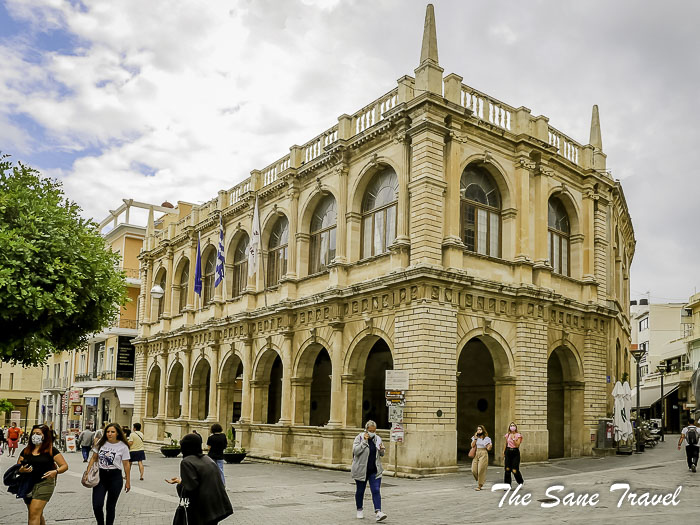
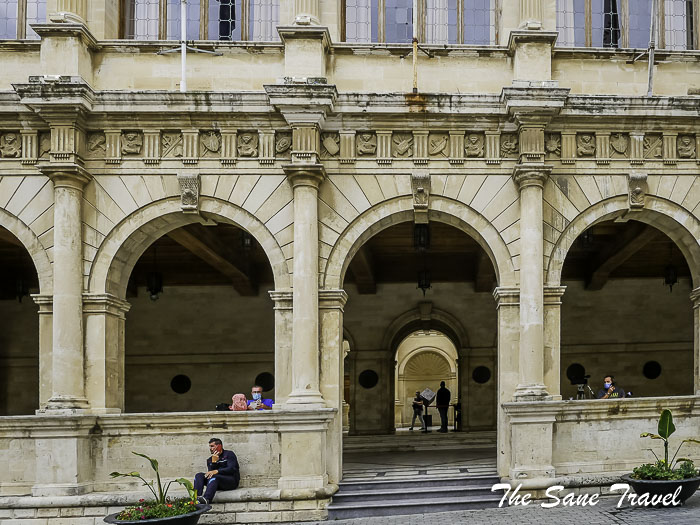 You can walk in and take a quick look.
You can walk in and take a quick look.
Address: 25th August Street
After that, head to nearby St. Mark's Basilica.
St. Mark's Basilica
St. Mark's Basilica is now the Municipal Art Gallery and often host art and crafts exhibitions. Built in 1239, it was once the Cathedral of Crete. Have a look to see if there is an exhibition in the Gallery. It's free of charge.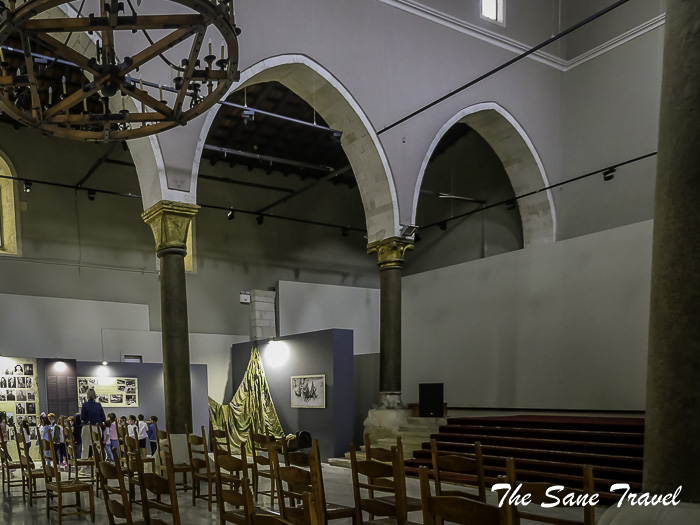
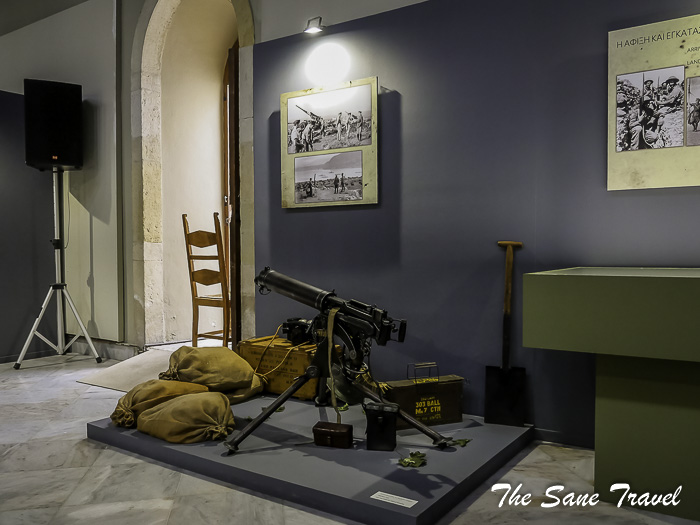
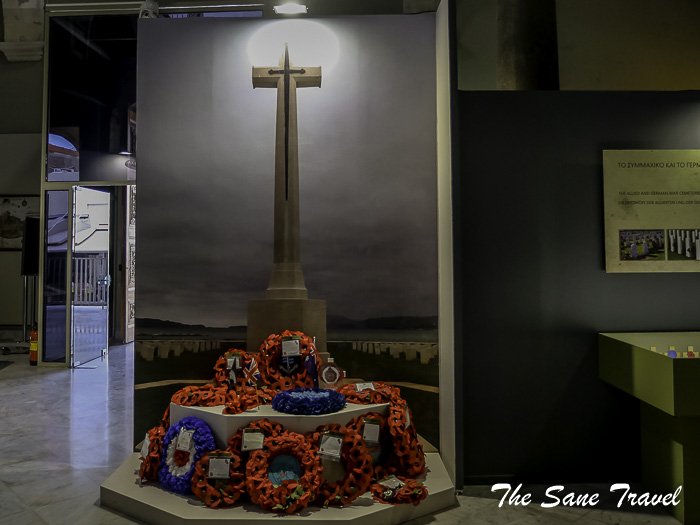 Address: Pl. Kallergon 100
Address: Pl. Kallergon 100
Then take your time to admire Lion Square.
Liondaria, or Lion Square
Lion Square is the heart of Heraklion, where tourists and locals meet for whatever purpose or no purpose. The fountain is composed of eight cisterns and decorated with stone relief, depicting figures of Greek mythology, such as Nymphs, Tritons, sea monsters and dolphins, while the main basin is supported by four sitting lions balancing a circular bowl on their heads.  The Italian governor Francesco Morosini built it to commemorate Venetian success in bringing much-needed water, through a brilliantly executed viaduct system from Mount Youchtas, to the centre of the city. You do not have to worry about food because there are plenty of omelettes, crepe and souvlaki places around.
The Italian governor Francesco Morosini built it to commemorate Venetian success in bringing much-needed water, through a brilliantly executed viaduct system from Mount Youchtas, to the centre of the city. You do not have to worry about food because there are plenty of omelettes, crepe and souvlaki places around.
Then make your way to Agios Minas Cathedral.
Agios Minas Cathedral
Among the churches of Heraklion, the one that stands out is the imposing and sizeable Metropolis of Agios Minas, built at the end of the 19th century.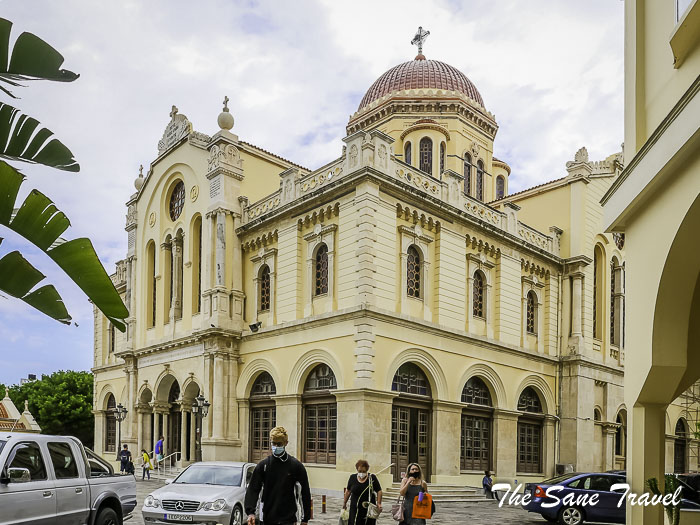 The cathedral, dedicated to the Patron Saint of Heraklion, is one of Greece's largest churches, completed in a cruciform shape with twin towers. The work of Mikail Damaskinos, among other representatives of the Cretan School, can be seen inside the church.
The cathedral, dedicated to the Patron Saint of Heraklion, is one of Greece's largest churches, completed in a cruciform shape with twin towers. The work of Mikail Damaskinos, among other representatives of the Cretan School, can be seen inside the church. 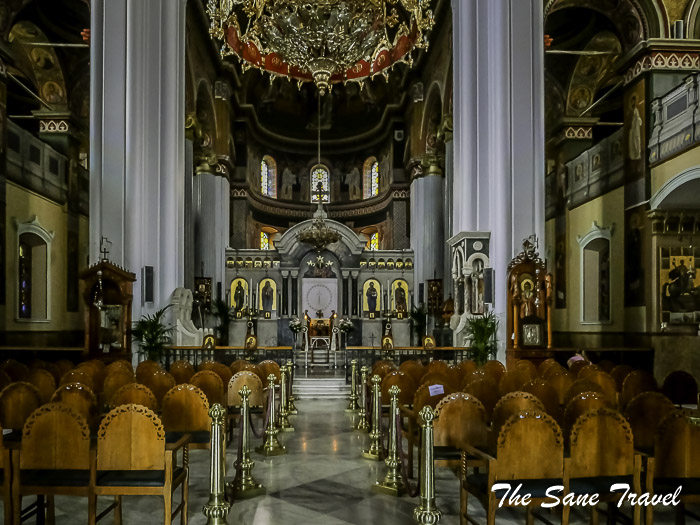
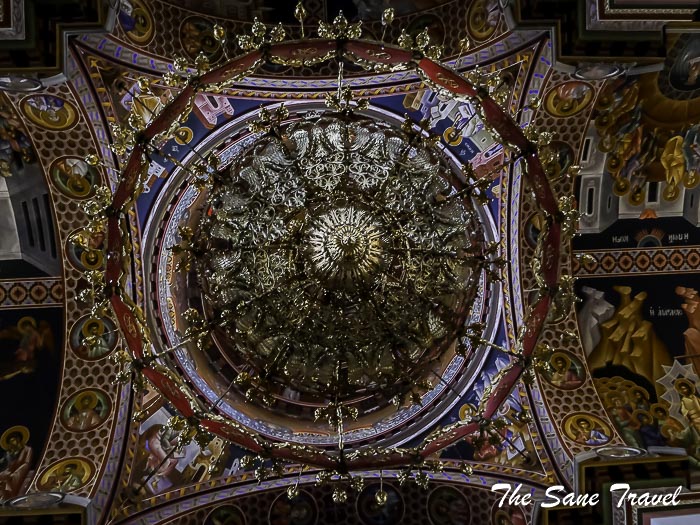 Adjacent to it stands the chapel of Mikros Agios Minas, and on the northeast is situated the church of Agia Ekaterini (16th century), which functions as a museum housing exhibits from the Cretan Renaissance.
Adjacent to it stands the chapel of Mikros Agios Minas, and on the northeast is situated the church of Agia Ekaterini (16th century), which functions as a museum housing exhibits from the Cretan Renaissance.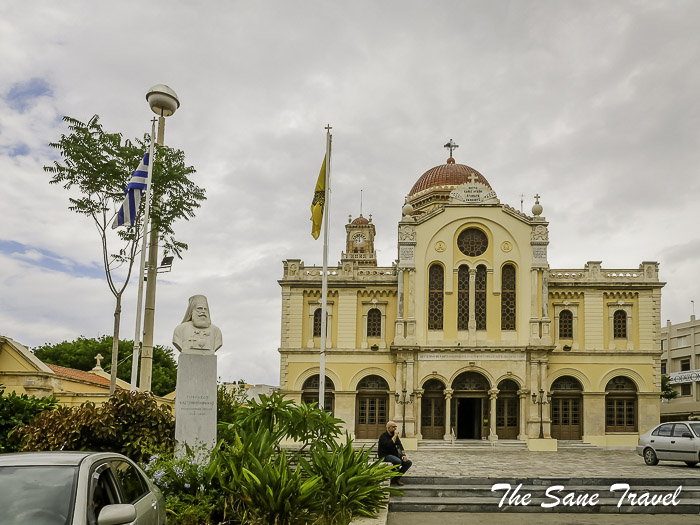 Then make your way to Bembo Fountain.
Then make your way to Bembo Fountain.
Bembo Fountain
Plateia Kornarou lies at the top of the market street you will explore in a few minutes. Before you proceed to the street, check out Bembo Fountain, probably the oldest fountain in the city, with some nice decorations. 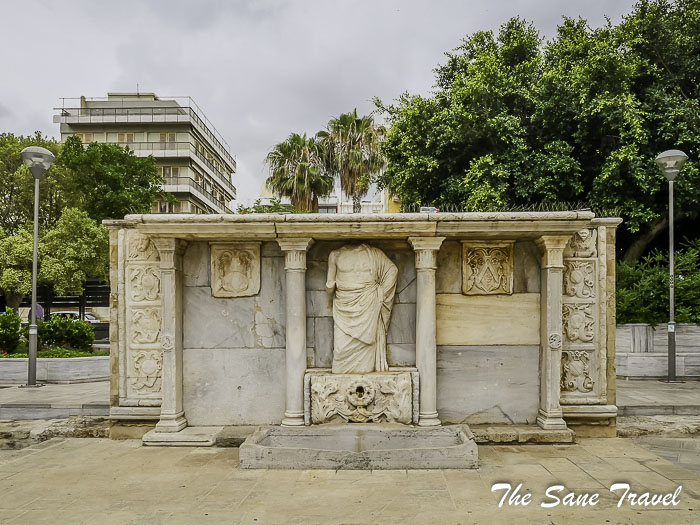 Unfortunately, the fountain is not operating anymore. Bembo Fountain was built in the late 16th century. It is decorated with columns, Venetian family coats-of-arms and a headless male statue brought from Ierapetra. Earlier people believed that the statue had supernatural powers, and religious rituals were organised in its honour. The Turkish sebil (charity fountain), next to Bembo Fountain, was built later. The atmospheric café is still serving Greek coffee and aperitifs from an antique stone pavilion at its centre, which is a great reminder of Crete's Turkish past.
Unfortunately, the fountain is not operating anymore. Bembo Fountain was built in the late 16th century. It is decorated with columns, Venetian family coats-of-arms and a headless male statue brought from Ierapetra. Earlier people believed that the statue had supernatural powers, and religious rituals were organised in its honour. The Turkish sebil (charity fountain), next to Bembo Fountain, was built later. The atmospheric café is still serving Greek coffee and aperitifs from an antique stone pavilion at its centre, which is a great reminder of Crete's Turkish past.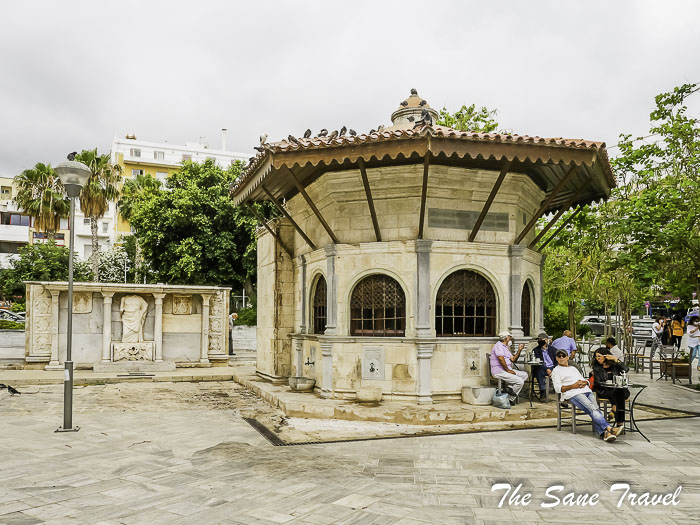
The Market
Walk slowly through 1866 Street. This old market street is still a place where locals come every day to find socks, shirts, herbs, fish, and fresh meat. It's a good place to find local honey and raki in the shops selling everything from selections of Cretan music to the finest cheese.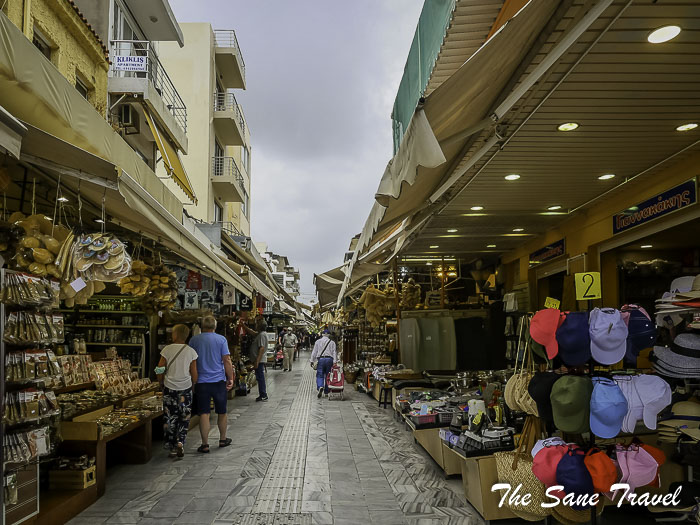
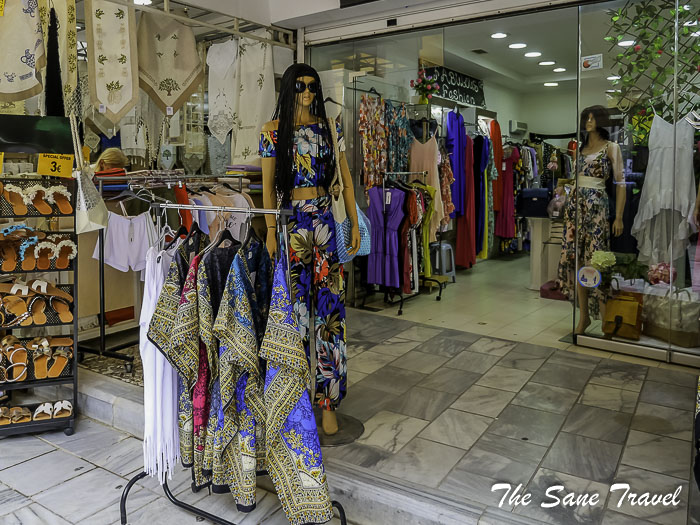
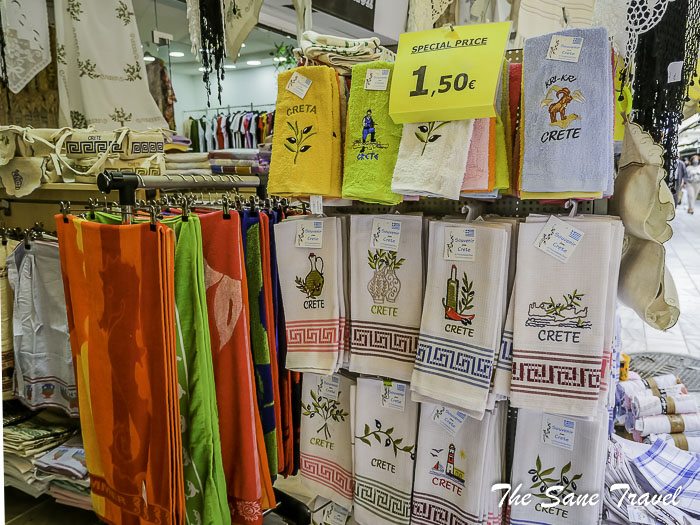 I think you need a break at this point to bring your shopping goods to the hotel and prepare for the evening part of the walk. It’s also a great idea to visit Venetian Harbour and watch the sunset, so plan your time accordingly. If you don’t have much time, head to the Koules Venetian Fortress right away.
I think you need a break at this point to bring your shopping goods to the hotel and prepare for the evening part of the walk. It’s also a great idea to visit Venetian Harbour and watch the sunset, so plan your time accordingly. If you don’t have much time, head to the Koules Venetian Fortress right away.
The Koules Venetian Fortress
At the entrance of the Venetian Harbour, the Koules Fortress (also known as Castello Del Molo or Rocca al Mare) gazes proudly out to sea. The Koules Venetian Fortress on the harbour walls was built in the early 16th century and served as a prison during Ottoman rule. It’s a great place to visit because of the impressive exterior and restored interior and exterior reliefs of the Lion of St. Mark.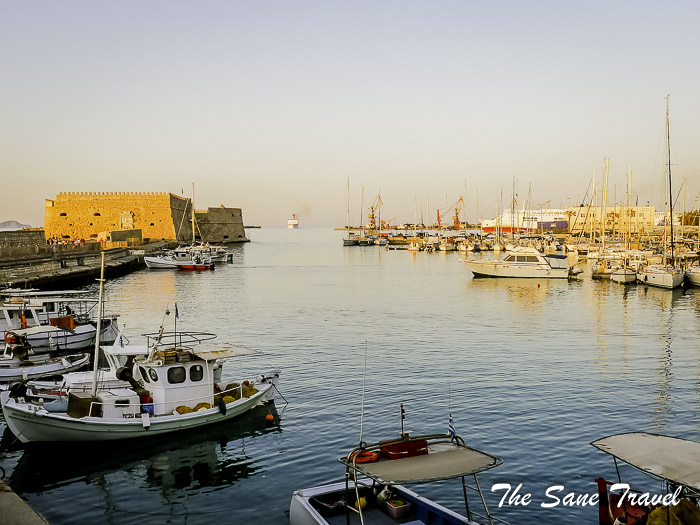
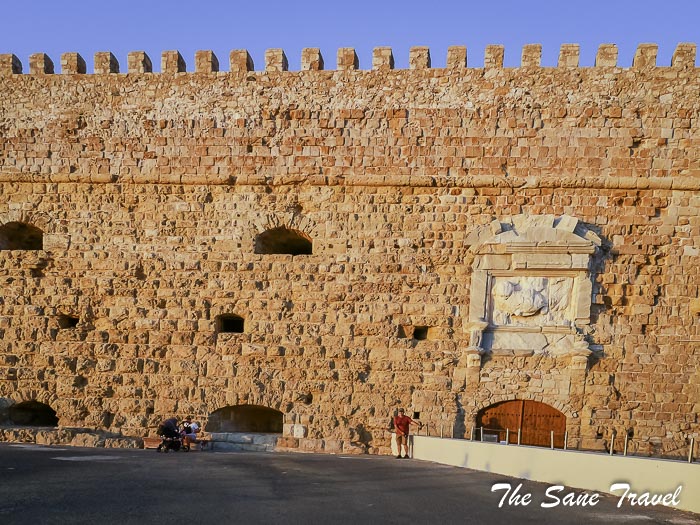
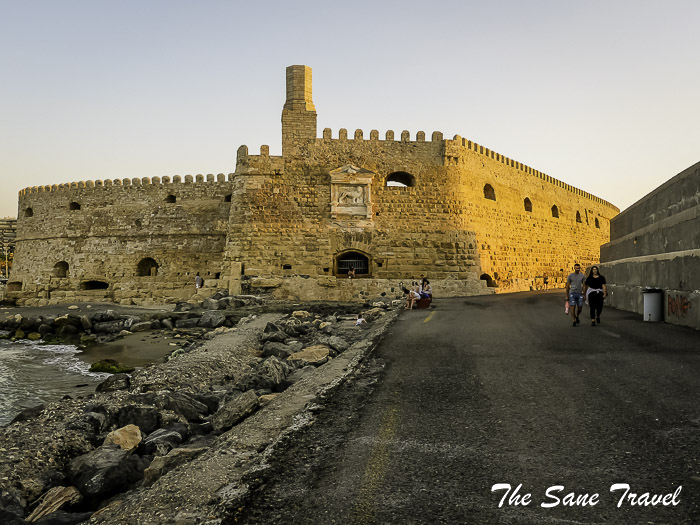 Across the harbour, the Venetian shipyards make for a romantic backdrop.
Across the harbour, the Venetian shipyards make for a romantic backdrop.
After visiting the Fortress, make your way to Heraklion lighthouse and take a look at street art on the walls of the pier. 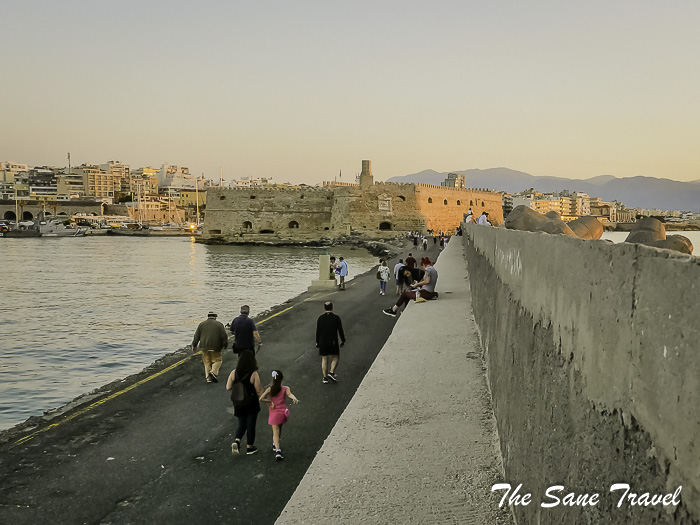
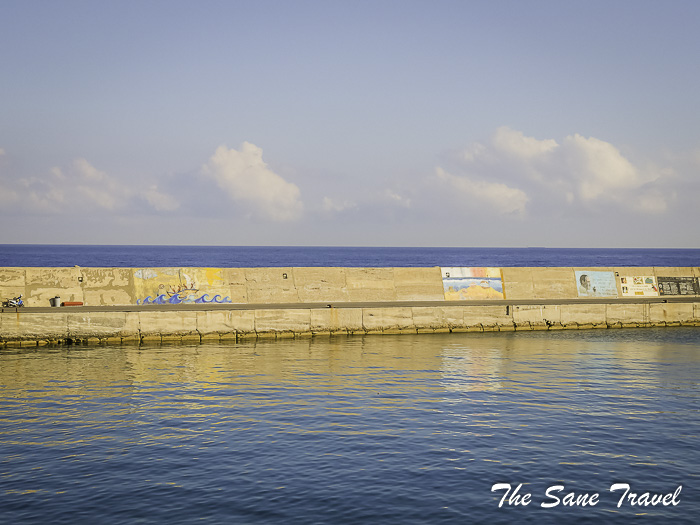
Old Venetian Harbour is a great place for viewing the sunset.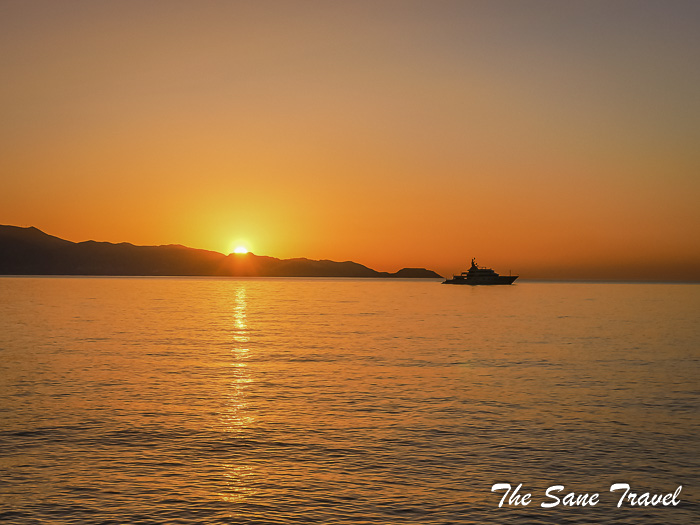
Street art
I hope you will not miss interesting pieces of street art during your city walk. I’ll just add some examples here.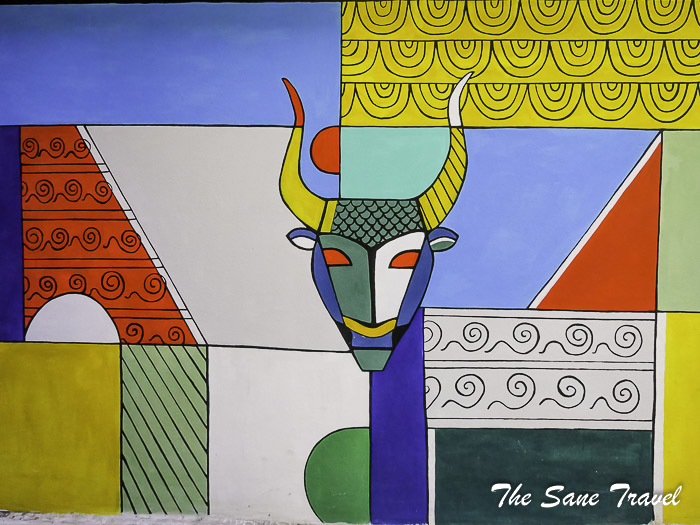
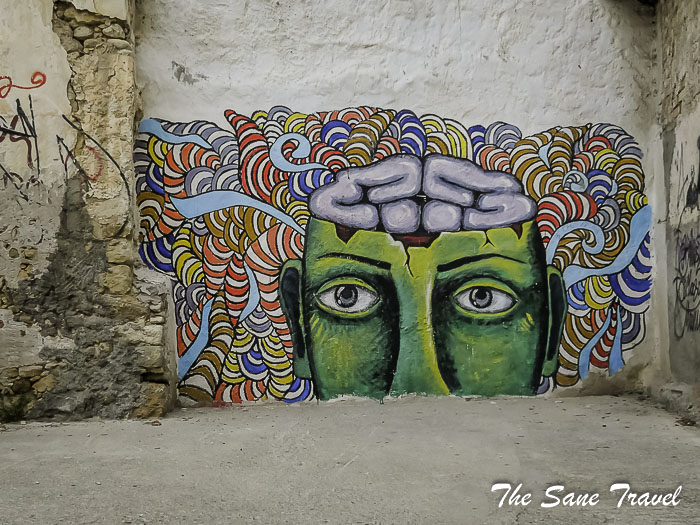
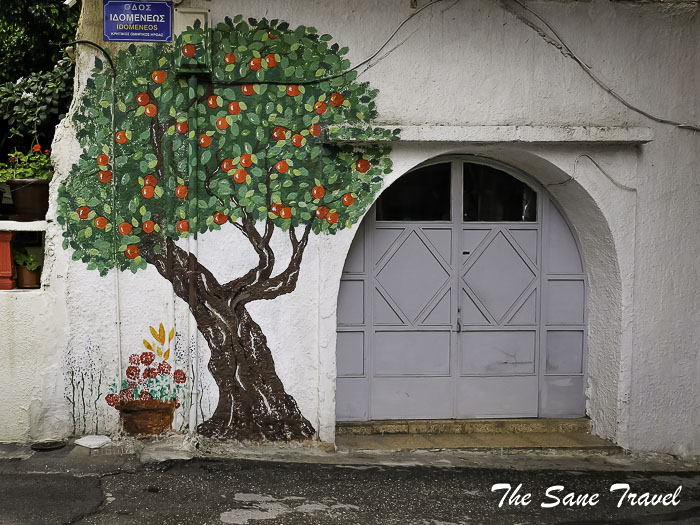
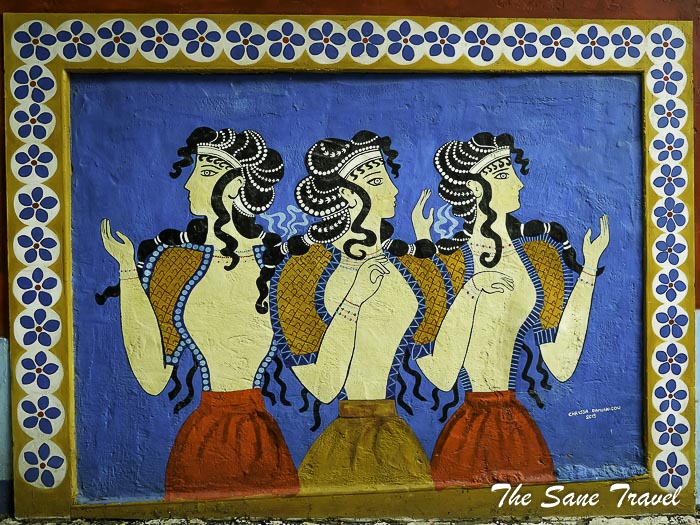
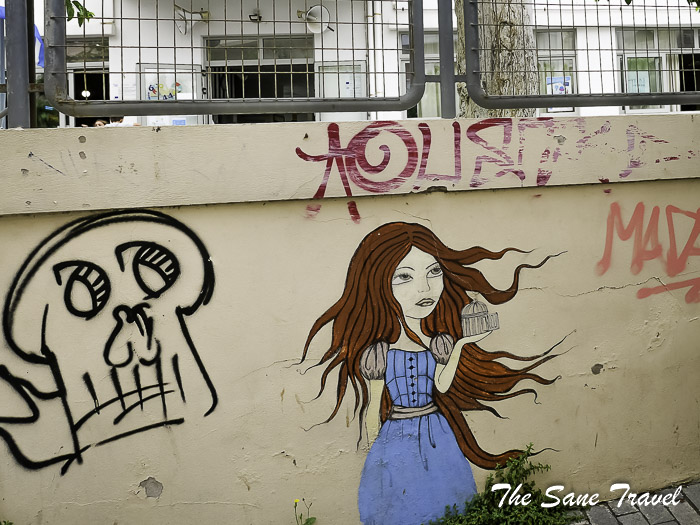
Where to stay
I tried two five-star hotels during my stay in Heraklion, and I have no clear preference between them. Aquila Atlantis has a larger pool, but I enjoyed breakfast at GDM Megaron Hotel more. So the choice is yours.
Aquila Atlantis Hotel
Aquila Atlantis Hotel is the largest luxury hotel in Heraklion. Located in the heart of the city and within 200 meters from the Archaeological Museum of Heraklion, the five-star Aquila Atlantis Hotel features an outdoor pool with unobstructed views over the harbour, a semi-covered heated pool, and an elegantly decorated lobby.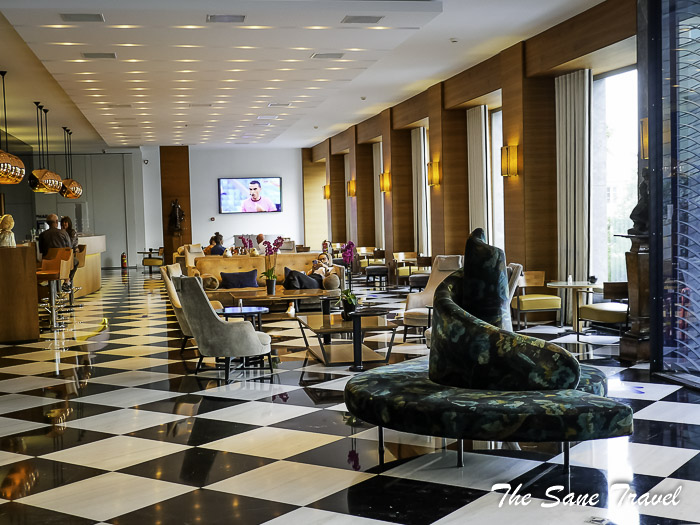

GDM Megaron Hotel
The hotel’s unique architecture and modern interior makes a subtle blend of luxury and intimacy. Pleasant rooms with high ceilings, modern furniture, velvet fabrics and state-of-the-art technology create a cosy environment for hotel guests who can enjoy the stunning sea and Koules Fortress views.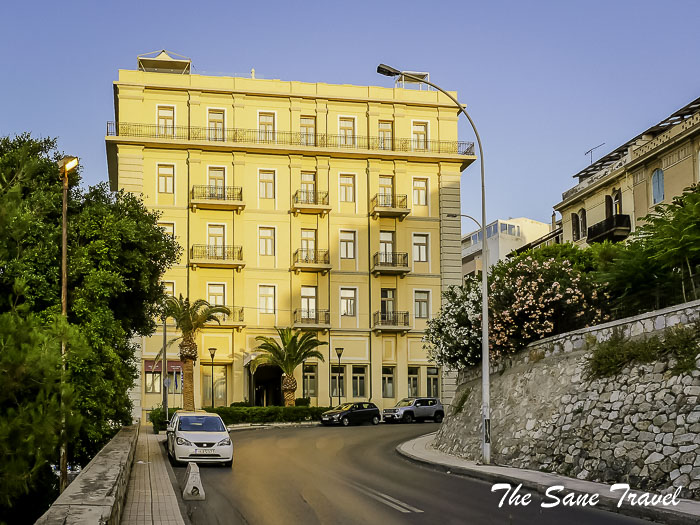
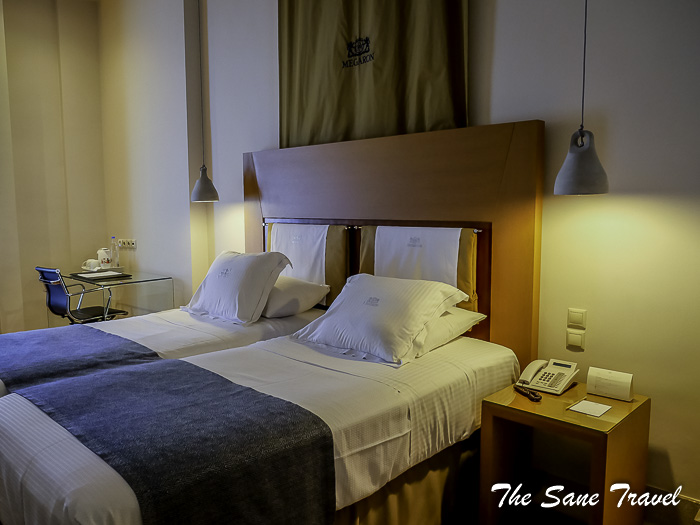
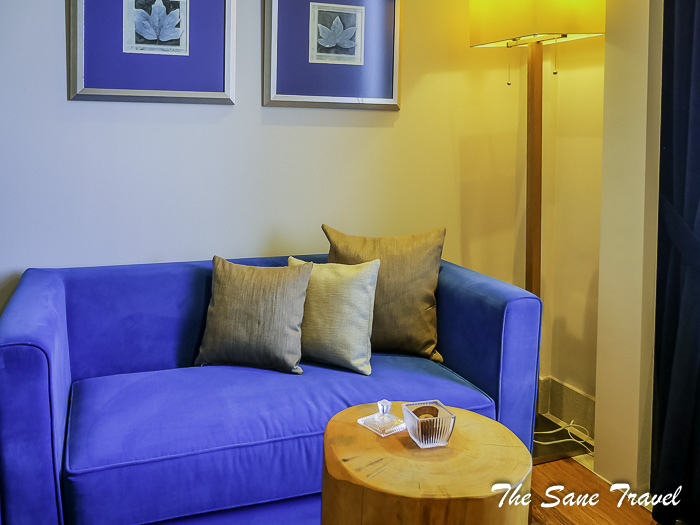
Practical information
If you arrive at Heraklion by plane, the cheapest option to get to the city centre is by public bus. The bus station is located some hundred metres from the exit of the airport. A bus ticket costs a bit more than one euro. 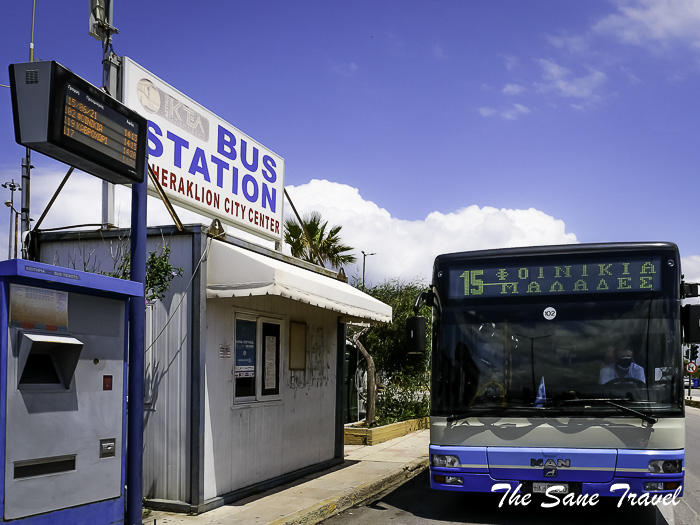 If you arrive by ferry, the city centre is within walking distance from the ferry port. The same applies to the Central bus station.
If you arrive by ferry, the city centre is within walking distance from the ferry port. The same applies to the Central bus station.
The total length of the walking tour with a return to the starting point is a bit more than 7 kilometres. It can take a full day if you visit the Archaeological Museum, have a good lunch, and watch the sunset at Old Venetian Harbour.
Like it! Pin it!
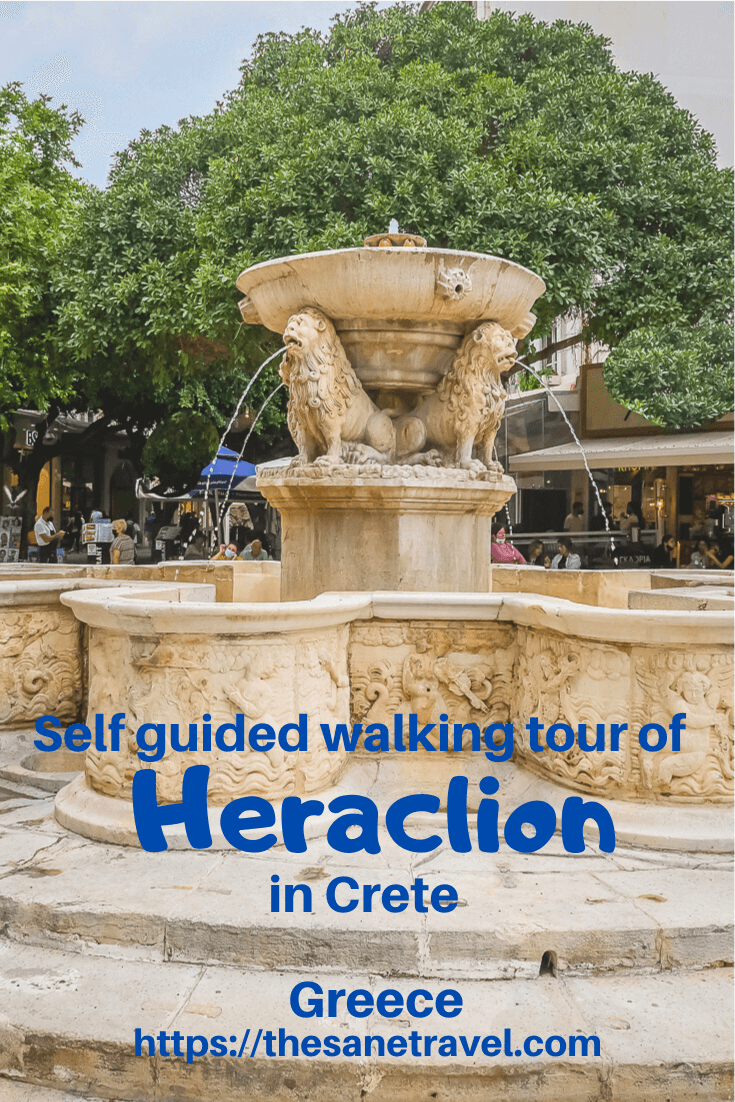
What did you think? Have you visited Heraklion in Crete, Greece? I’d love to hear from you so please add your comments below.
Author: Anita Sāne

About the author
Anita is a part-time traveller, passionate photographer and a retired career woman from Latvia, travelling mostly solo for more than 15 years. She is a skilled travel planner who plans and executes her travels by herself. Anita wants to show you how to travel the world and open your mind to new experiences. Follow her on Facebook, Instagram, Pinterest, Twitter and Bloglovin.

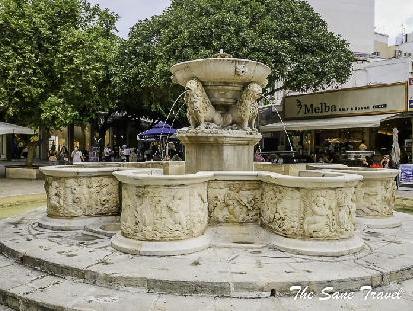
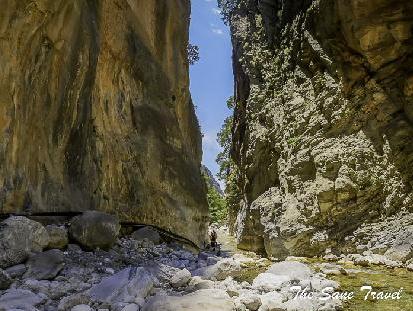
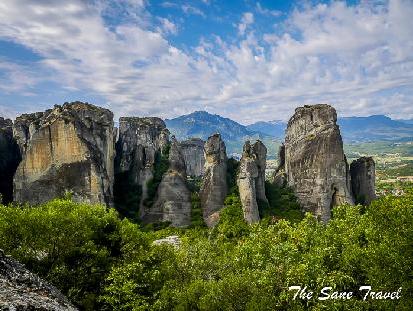
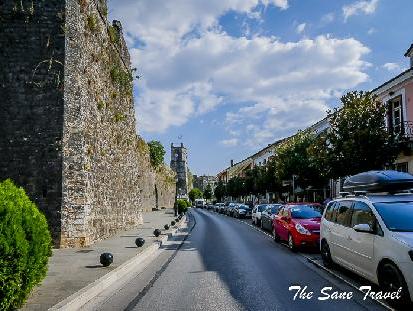
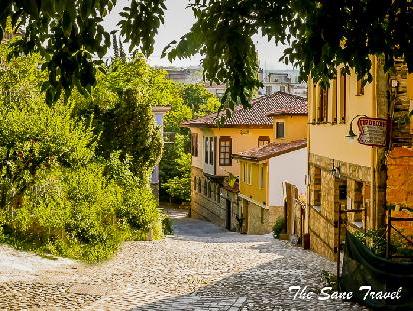
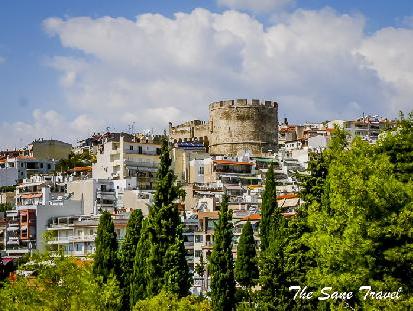
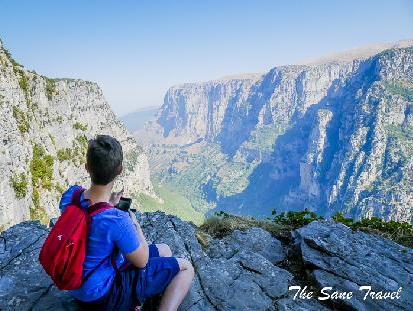
We will be visiting Crete in July via cruise ship. Do you have a map to go with your walking tour? We would love to follow your itinerary and a map would really help. We are really looking forward to experiencing Heraklion.
Comment from the Author:
Hello Tom,
thank you for your comment with a question. There is a map included. Just scroll down. It is at the bottom of the article.
Happy travels!
Best, Anita
Report
My comments